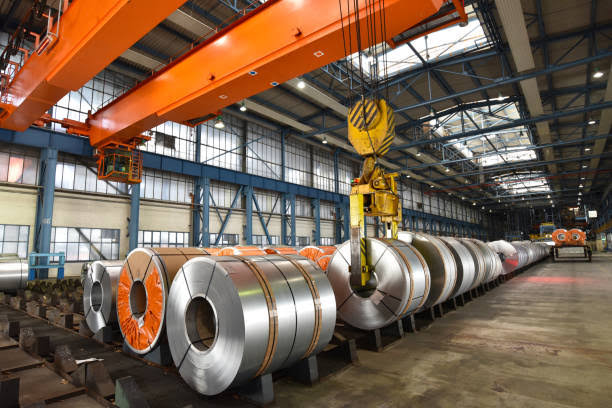India’s Steel Giants Seek Relief on Raw Material Costs

Producers highlight high iron ore premiums and call for government action to ensure global edge
Bhubaneswar : India’s leading steel producers have urged the government to take immediate steps to lower input costs, particularly iron ore and coking coal, in order to maintain global competitiveness. At the ISA Steel Conclave 2025 held, top executives from Tata Steel, SAIL, JSW Steel, Jindal Steel, and ArcelorMittal Nippon Steel (AM/NS) India highlighted the urgent need for reforms in iron ore supply and pricing mechanisms.
Jindal Steel chairman and ISA president Naveen Jindal stressed that the auction of iron ore mines needs to be streamlined. “If enough mines are brought out and there is a proper auction calendar, steelmakers will feel reassured that raw material security is in place. Right now, plants are forced to bid aggressively, paying high premiums, which makes operations unsustainable. With more supply, prices will automatically come down,” Jindal said.
Echoing similar concerns, Dilip Oommen, CEO of AM/NS India, remarked that steel’s global competitiveness hinges on input costs. “One of the key areas we need to address is competitiveness. Input prices, especially for iron ore, must necessarily come down if India is to remain a strong player in the global market,” he said.
The discussions follow the government’s recent inter-ministerial meeting on August 26, which explored ways to boost iron ore output, including auctioning 20 million tonnes of ore stockpiled at pre-auction mine sites and expanding state-run NMDC’s mining capacity. Authorities are also considering reallocating non-operational mines owned by Steel Authority of India and Odisha Mining Corporation, either through fresh auctions or transfers to state entities.
Data highlights the scale of the challenge. Since 2015, about 135 iron ore mines have been auctioned, but only 35 are operational. Odisha, Chhattisgarh, Karnataka, Jharkhand, and Maharashtra dominate India’s ore production. Many mines remain idle due to delays in clearances or uneconomic premiums quoted during auctions. “Companies like JSW Steel and AM/NS India have acquired several of these mines, but high costs make operations unviable,” explained Dhruv Goel, CEO of market intelligence firm Big Mint.
For steelmakers, the stakes are high. Rising raw material costs, coupled with aggressive dumping of cheap steel from China, Japan, Vietnam, and South Korea, have intensified pressures. Naveen Jindal welcomed the Directorate General of Trade Remedies’ (DGTR) recommendation of a 12% tariff on certain Chinese steel products, though the industry had initially sought 25%. “If DGTR has recommended 12%, we can manage. If problems arise, we will revisit the issue with the government,” Jindal said. The proposed duty would taper to 11.5% in the second year and 11% in the third.
Industry experts argue that improving domestic iron ore supply and securing fair prices will not only lower production costs but also strengthen India’s ability to withstand global oversupply shocks. Increased supply could ease steel prices domestically, benefitting downstream sectors such as construction, automobiles, and infrastructure.
Looking ahead, Jindal expressed optimism about demand growth. “Domestic demand should grow in double digits in the second half of this financial year, with steel prices expected to pick up,” he predicted. While growth has been sluggish in the year’s first half, government-led infrastructure projects and rising automotive demand are expected to drive momentum.
The National Steel Policy has set an ambitious production target of 300 million tonnes by 2030, though experts believe it may be reached by 2032 instead. Even so, industry leaders remain confident that India’s long-term growth trajectory remains intact, provided structural reforms in raw material supply and pricing are implemented without delay.
The conclave concluded with a unified message: India’s steel industry has the capacity and demand potential to lead globally, but sustained government support on raw materials and trade protection is critical for realising this vision.









